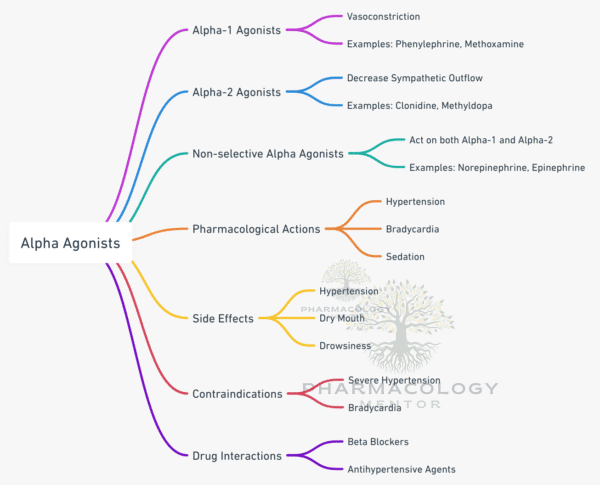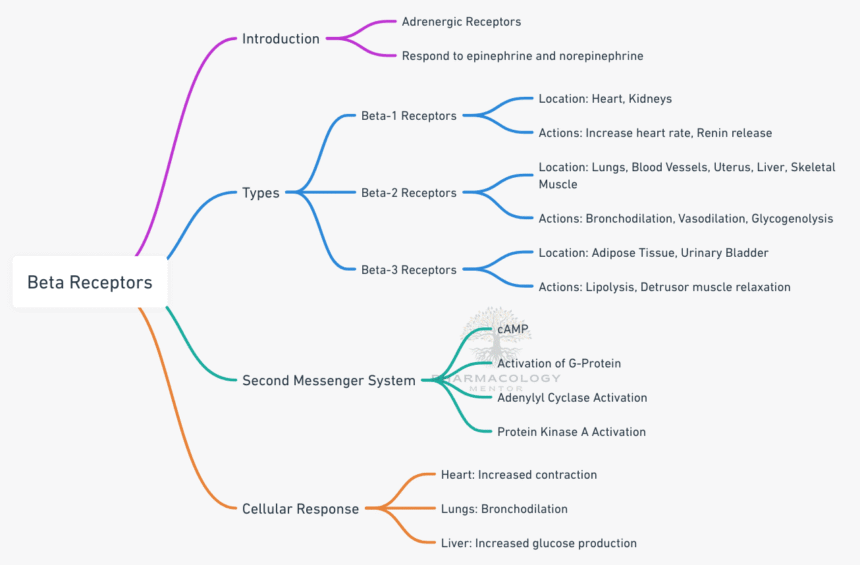Pharmacology of Antiemetic Drugs
Introduction Nausea and vomiting are defensive reflexes that protect the body from ingested toxins and noxious substances, but they can also emerge from various benign or pathological stimuli. From motion sickness and morning…
Pharmacology of Alpha-Blockers
Introduction Alpha-adrenergic receptor antagonists, commonly referred to as alpha-blockers, form a crucial element in the pharmacologic management of several cardiovascular and genitourinary conditions. By blocking alpha-1 and/or alpha-2 adrenergic receptors, these agents…
Pharmacology of Beta-Blockers
Introduction Beta blockers, also known as β-adrenergic receptor antagonists, are a foundational class of cardiovascular drugs used to treat hypertension, ischemic heart disease, heart failure, arrhythmias, and other conditions. By…
Pharmacology of Alpha Agonists
Introduction to Alpha Agonists: Alpha agonists are a class of drugs that primarily act on alpha-adrenergic receptors. These receptors are part of the sympathetic nervous system and respond to the…
Beta Receptors: A Complete Overview for Medical Professionals
Introduction to Beta Receptors: Beta receptors are adrenergic receptors that respond to the neurotransmitters epinephrine (adrenaline) and norepinephrine (noradrenaline). They are part of the G-protein-coupled receptor family and play a…
Sympathomimetics: Beta-Agonists
Introduction to Beta-Agonists: Beta-agonists are medications that stimulate beta receptors in the body. These receptors are found in various tissues, including the lungs, heart, and blood vessels. Due to their…
Understanding Alteplase: The Tissue Plasminogen Activator You Need to Know
Introduction Alteplase (also referred to as recombinant tissue plasminogen activator or rt-PA) is a cornerstone of thrombolytic therapy, widely used to treat acute ischemic stroke, acute myocardial infarction, and other thromboembolic…
Sodium Channel Blockers (SCBs)
Introduction Sodium (Na⁺) channels are integral membrane proteins responsible for the rapid upstroke (phase 0) of the action potential in excitable cells such as neurons and cardiomyocytes. By selectively perming…
What is Barbiturate toxicity, and how is it treated?
Introduction to Barbiturate Toxicity: Barbiturates, once hailed for their sedative and anticonvulsant properties, have a narrow therapeutic window, making them susceptible to overdose. While their clinical use has diminished over…
Pharmacology of Barbiturates
Introduction Barbiturates are among the earliest classes of sedative-hypnotic drugs discovered and used clinically. Derived from barbituric acid, these compounds exert a depressant influence on the central nervous system (CNS), leading to sedation, hypnosis, or…
















